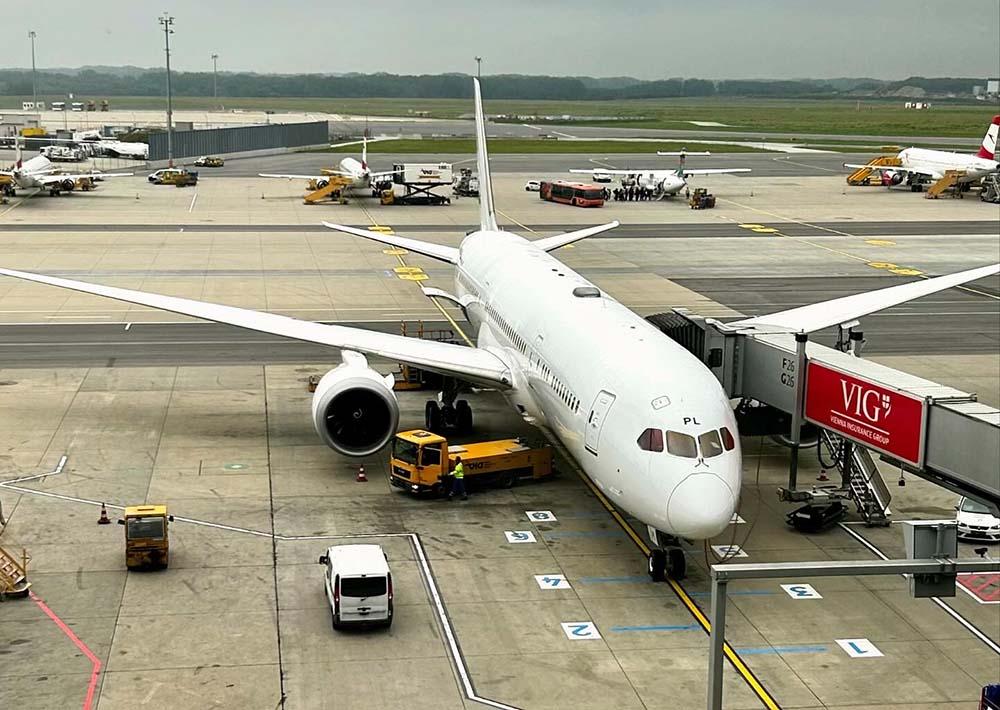
VIENNA—Lufthansa subsidiary Austrian Airlines has begun a multi-year long-haul fleet rollover program after receiving the first of two leased Boeing 787-9s. The second 787 is expected to enter service by the end of June, and 11 787s should join the fleet by 2028.
Meanwhile, it must also maintain its aging fleet of three Boeing 767-300ERs and six 777-200ERs. During the phaseout period, the maintenance and continuing airworthiness management organization operations for all three aircraft types—the 767, 777 and 787—will be looked after by Austrian Technik.
For the Vienna-based technical staff, this involves training on the 787 in line with demand. It began training its first MRO technicians for the aircraft type last year. “In the technical area, it is possible to obtain licenses for all three types,” Klaus Schludnig, project manager for Austrian’s intercontinental rollover 787 fleet, told Aviation Week Network during an on board service test flight of the first aircraft.
Detailed planning is necessary wherever possible as Austrian prepares to take deliveries of the new aircraft. “You can’t plan such a process for a particular day—you have to take several months of leeway,” said Schludnig, adding that the airline must account for delay risks of incoming aircraft.
Another important question for Austrian is how much to invest in the existing fleet to strike the right balance between cost and lifespan. “2025 is a good time period where Austrian can keep the 767 in an airworthy condition without a large investment,” said Schludnig.
Austrian began the 787 fleet entry program in March 2023, originally planning for the 787s Lufthansa took over from Hainan Airlines to be subsequently transferred to Austrian. But well-known delivery problems with Boeing’s new 787s changed this plan for the time being. In the interim, Lufthansa was able to lease two former 787-9s from Bamboo Airways to initiate the fleet renewal at Austrian. The interior of both aircraft is identical to those of Hainan Airlines’ 787s.
“All in all, the 787 is a young aircraft and there are no huge maintenance events to expect soon. We talk basically about material and processing costs,” said Schludnig.
Austrian will receive a total of seven identical 787s, the cabins of which will be adapted to Austrian Airlines’ standards. "The next addition will then be four new 787s. Until then, however, there is still time to evaluate which cabin will then be installed," said Schludnig.
In addition to handling the 787 program, Schludnig is responsible for decommissioning of the 767 and 777. “All in all, it is a multi-year program. The phase-out of the 767 will begin approximately in mid-2025 and will go hand in hand with the introduction of further 787s into the fleet,” said Schludnig. “From the end of 2026/beginning of 2027, this will also affect the 777. By 2028, our long-haul fleet will consist of 11 Boeing 787s.”
Schludnig says 777 pilots will receive a five-day flight simulator training and five days of practical training for their 787 type rating. “The training of pilots from the 767 to the 787 is more critical,” he added. “This is much more extensive, and the phase-out of the 767 is based on the availability of pilots.”





